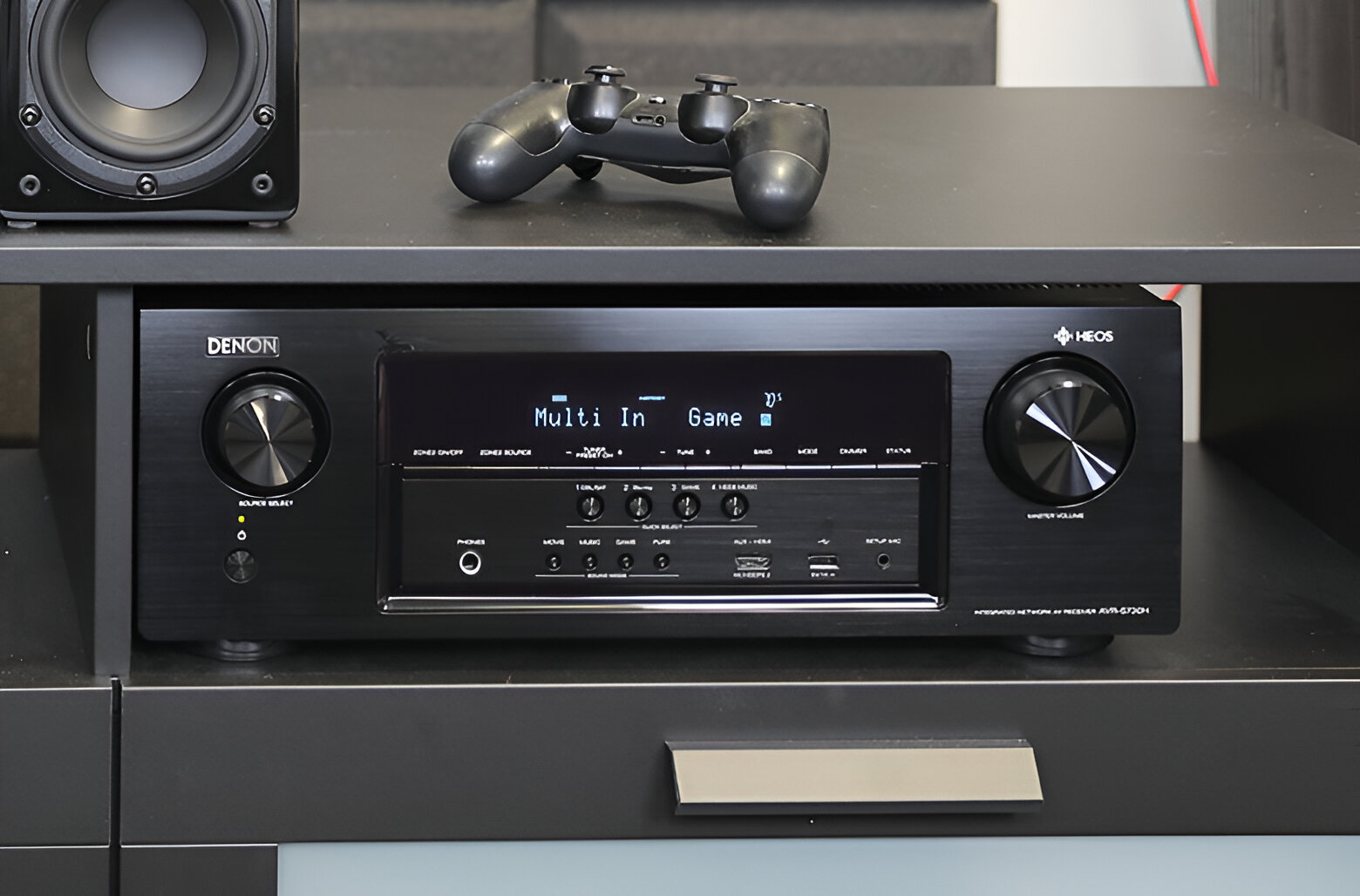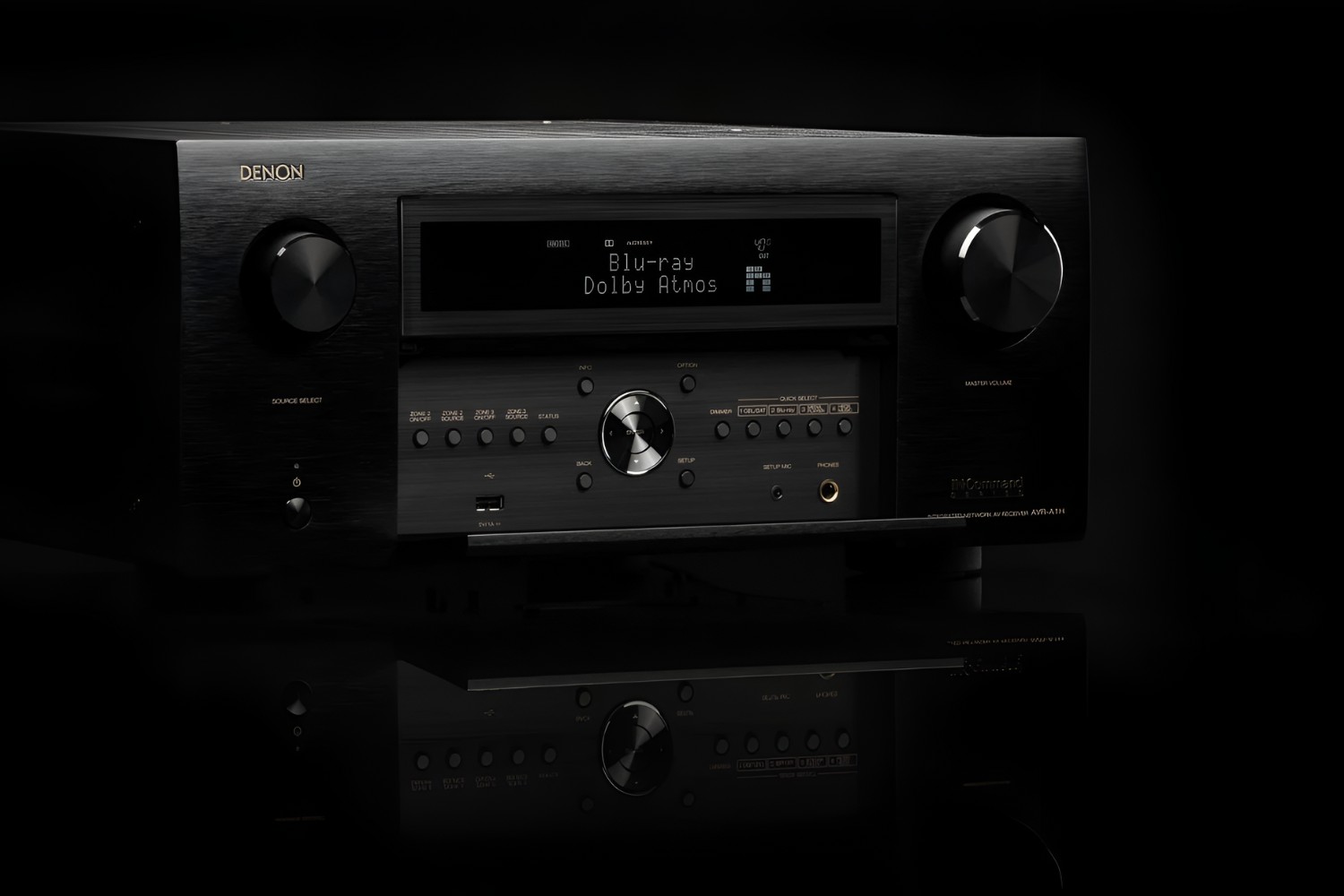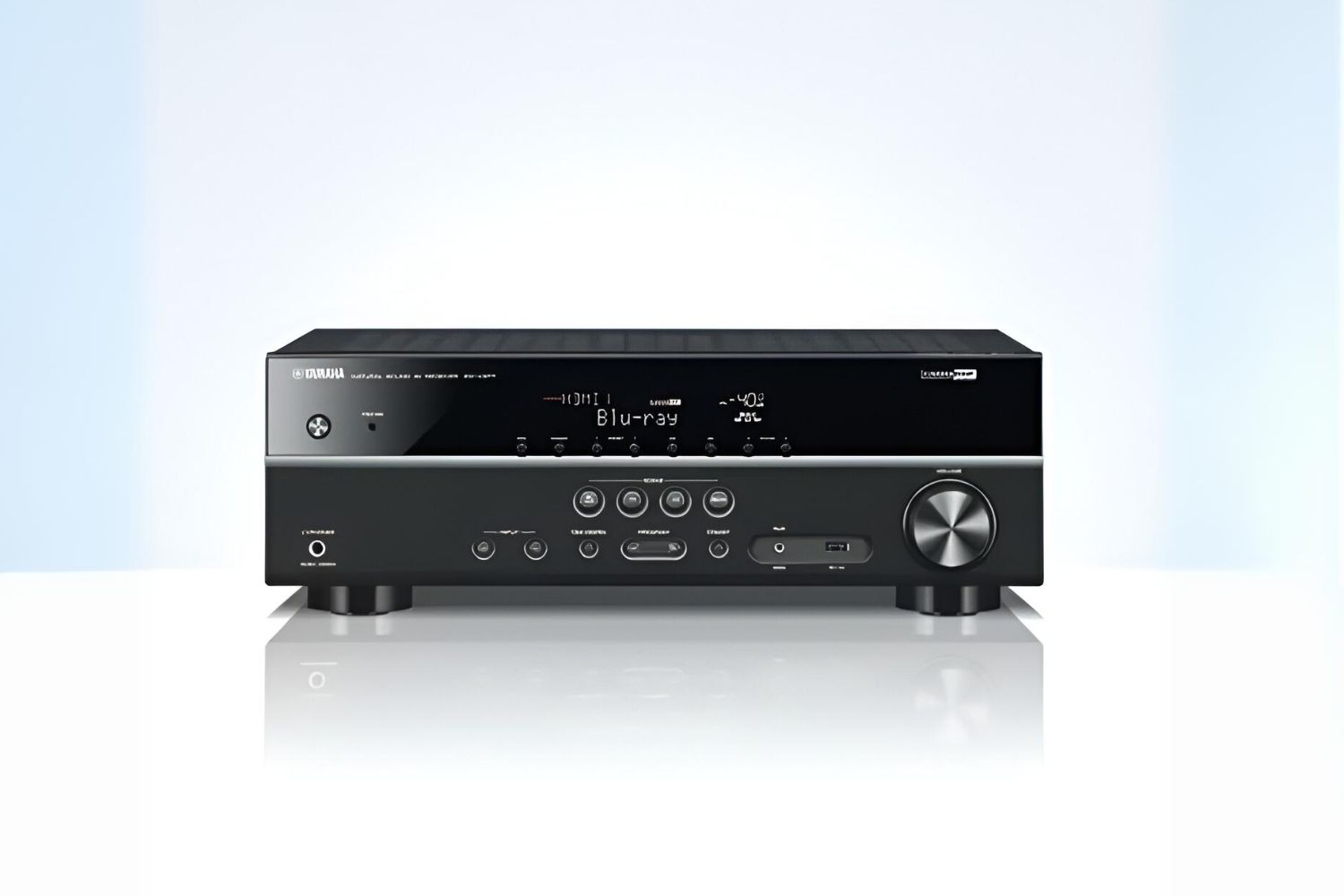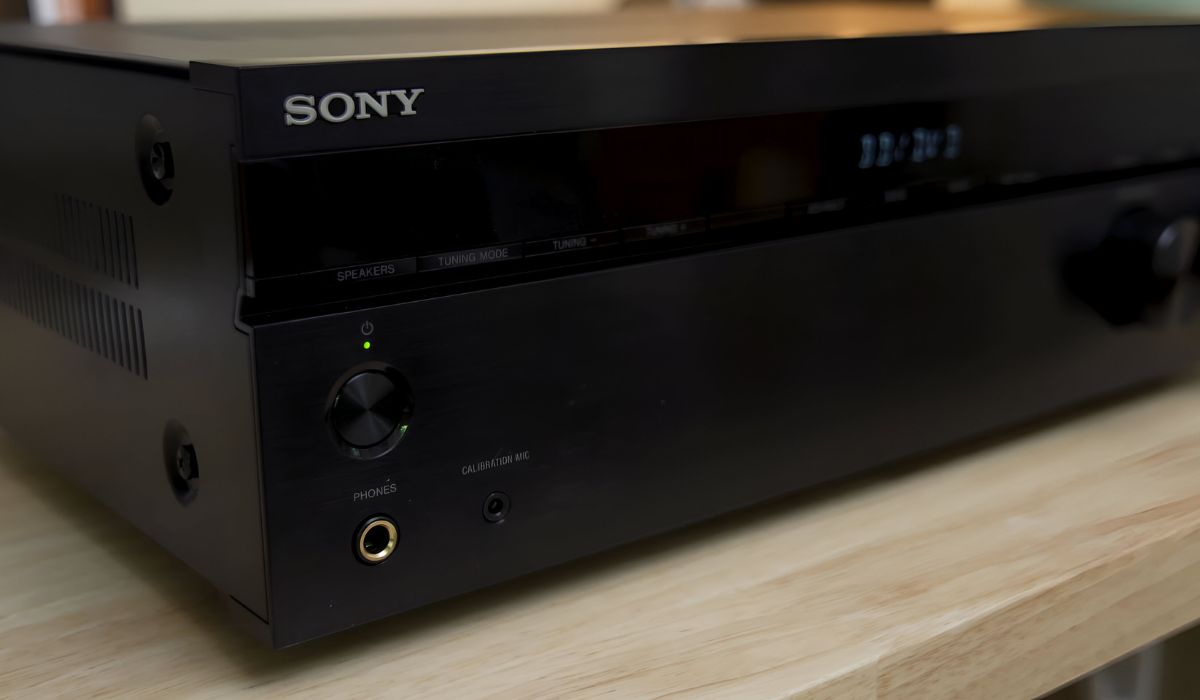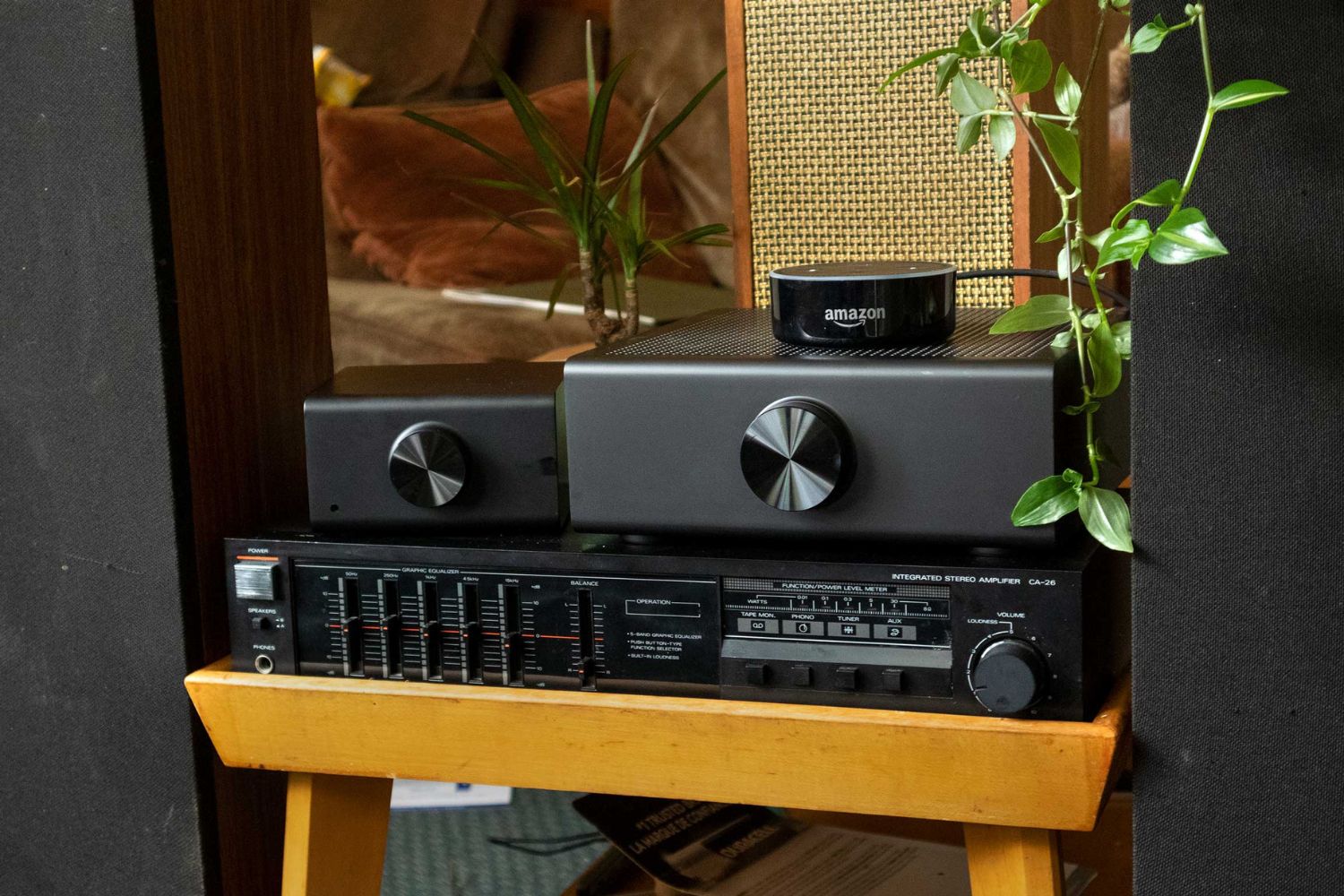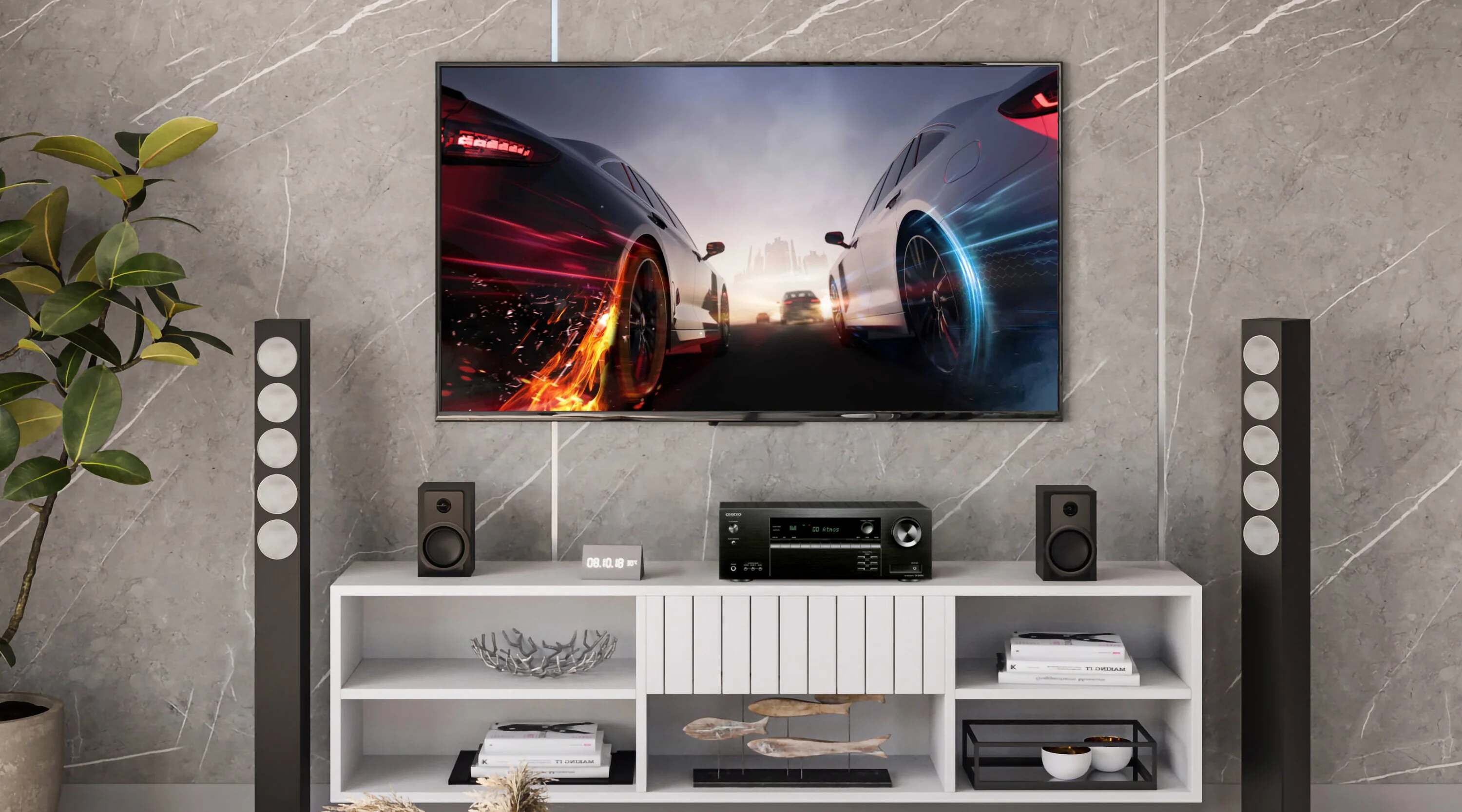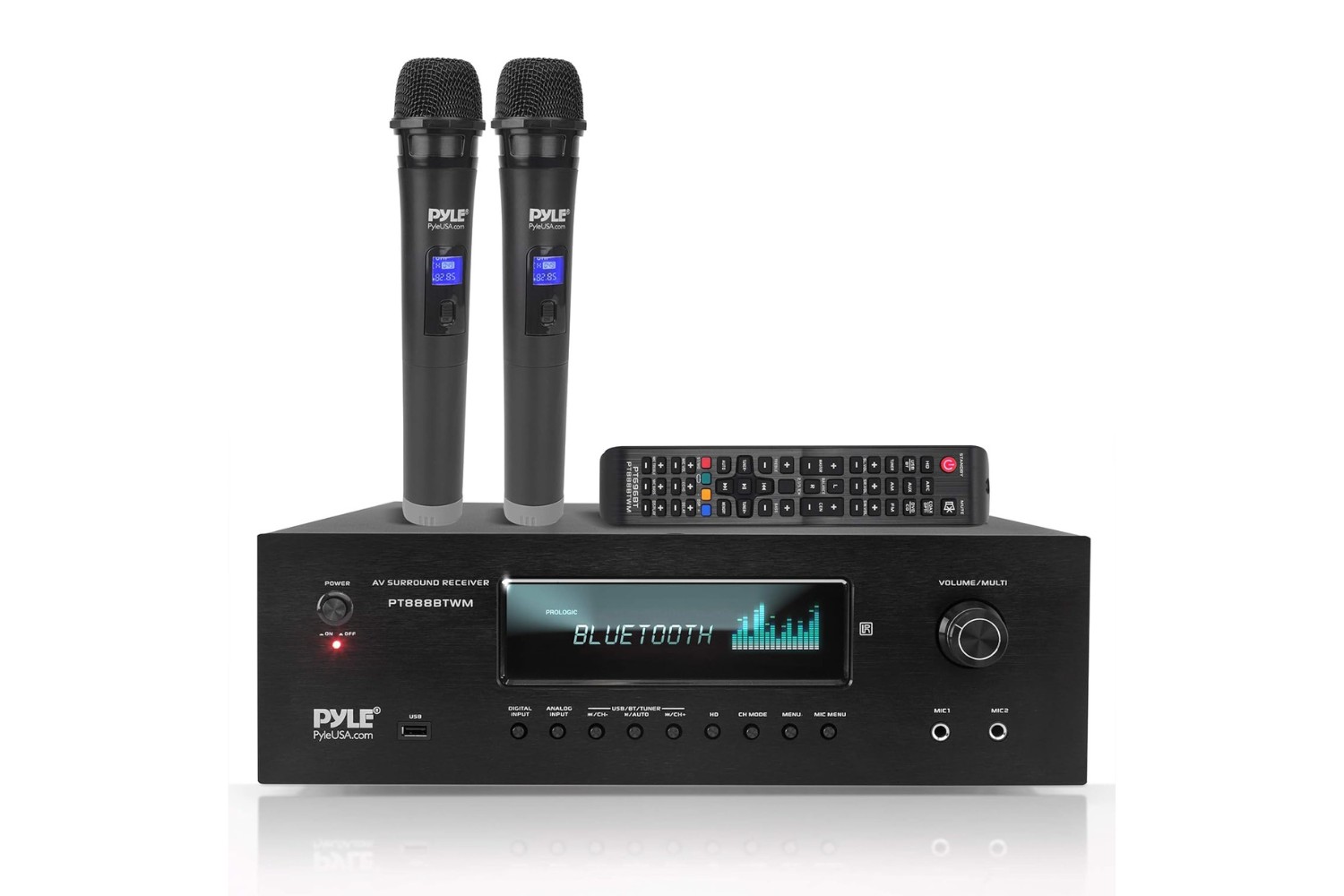Introduction
Understanding AV Receivers
When it comes to creating an immersive home theater experience, an AV receiver plays a pivotal role in delivering exceptional audio and video performance. Understanding the functions and capabilities of AV receivers is crucial for making an informed decision when purchasing one. An AV receiver, or audio-video receiver, serves as the central hub for connecting and controlling various audio and video devices in a home entertainment setup. It acts as a powerhouse, amplifying audio signals and processing video inputs to deliver high-quality sound and visuals to speakers and a display device, such as a television or projector.
AV receivers are designed to decode and process audio formats, such as Dolby Atmos, DTS:X, and others, to create a captivating surround sound experience. Additionally, they provide connectivity options for multiple audio and video sources, including Blu-ray players, gaming consoles, streaming devices, and more. With built-in amplification and advanced audio processing capabilities, AV receivers serve as the heart of a home theater system, elevating the overall audio-visual performance to cinematic levels.
As technology continues to advance, AV receivers are constantly evolving to support the latest audio and video standards, including high dynamic range (HDR), 4K resolution, and object-based audio. This evolution allows AV receivers to remain at the forefront of home entertainment, delivering cutting-edge features and seamless integration with modern audio and video components.
Understanding the key aspects of AV receivers, including their functionalities, connectivity options, and evolving capabilities, is essential for individuals looking to enhance their home theater setups and elevate their entertainment experiences.
Understanding AV Receivers
AV receivers are the central component of a home entertainment system, serving as a versatile and powerful hub for audio and video processing. These devices are equipped with a range of features and capabilities that contribute to the overall audio-visual experience, making them essential for creating a captivating home theater setup.
One of the primary functions of an AV receiver is to amplify and process audio signals from various sources, including speakers, subwoofers, and audio input devices. By leveraging built-in amplification and sophisticated audio processing technologies, AV receivers can deliver immersive surround sound, replicating the cinematic experience within the confines of a home environment.
Furthermore, AV receivers are designed to decode and support a multitude of audio formats, including Dolby Atmos, DTS:X, and other advanced codecs. This decoding capability enables the creation of three-dimensional soundscapes, where audio can be positioned and moved in space, enveloping the listener in a truly immersive auditory environment.
Connectivity is another key aspect of AV receivers, as they offer a plethora of input and output options to accommodate various audio and video sources. HDMI inputs and outputs, optical and coaxial digital audio inputs, and analog audio connections allow users to seamlessly integrate multiple devices, such as gaming consoles, Blu-ray players, set-top boxes, and streaming media players, into the home theater system.
Moreover, modern AV receivers are equipped to handle the latest video standards, such as 4K resolution and high dynamic range (HDR), ensuring that the visual output is crisp, vibrant, and true to the original content. This capability is essential for delivering stunning visuals on compatible displays, including 4K televisions and projectors.
Understanding the fundamental role of AV receivers in processing audio and video signals, decoding advanced audio formats, and providing extensive connectivity options is crucial for anyone seeking to optimize their home entertainment setup and elevate their audio-visual experiences.
Considerations for Choosing an AV Receiver
When selecting an AV receiver for a home theater system, several essential factors should be taken into account to ensure that the chosen device meets the specific requirements and preferences of the user. Understanding these considerations can help individuals make informed decisions and choose an AV receiver that aligns with their audio-visual needs and future expansion plans.
Power and Channels: The power output and the number of channels are crucial considerations when choosing an AV receiver. The power rating determines the amplifier’s capability to drive speakers effectively, while the number of channels indicates the potential for creating a multi-speaker setup, such as a 5.1, 7.1, or even more complex configurations for immersive audio experiences.
Audio and Video Compatibility: It is essential to ensure that the AV receiver supports the desired audio formats, such as Dolby Atmos, DTS:X, and others, to fully leverage the capabilities of modern home theater systems. Additionally, compatibility with video standards, including 4K resolution and HDR, is crucial for delivering stunning visuals on compatible displays.
Connectivity Options: The availability and types of input and output connections play a significant role in the versatility and expandability of the AV receiver. HDMI inputs, digital and analog audio inputs, and networking capabilities for streaming and multi-room audio are essential features to consider based on the user’s specific connectivity needs.
Room Calibration and EQ: Many AV receivers offer room calibration and equalization features to optimize audio performance based on the acoustics of the room. Advanced calibration systems can analyze the room’s characteristics and adjust the audio output to deliver the best possible sound quality, making them valuable additions to a home theater setup.
Networking and Streaming Capabilities: With the increasing prevalence of streaming media and networked audio, the networking and streaming capabilities of an AV receiver are becoming increasingly important. Support for streaming services, wireless connectivity, and multi-room audio distribution can significantly enhance the versatility and functionality of the home entertainment system.
Considering these factors and evaluating how they align with specific audio-visual requirements and future expansion plans is essential for choosing an AV receiver that can deliver a compelling and immersive home theater experience.
Types of AV Receivers
AV receivers come in various types, each catering to specific audio-visual needs and preferences. Understanding the different types of AV receivers can help individuals identify the most suitable option for their home entertainment setups, whether it’s a simple stereo configuration or a complex multi-channel surround sound system.
Stereo Receivers: Stereo receivers are designed for two-channel audio reproduction, making them ideal for music enthusiasts and those seeking high-quality audio performance in a simple setup. These receivers typically feature built-in amplification and provide connectivity for a pair of speakers, offering a straightforward solution for stereo music playback.
Home Theater Receivers: Home theater receivers are tailored for multi-channel audio and video processing, making them suitable for creating immersive surround sound experiences. These receivers support configurations such as 5.1, 7.1, or even more complex setups, accommodating multiple speakers and a subwoofer for enveloping the listener in a dynamic audio environment.
AV Preamp/Processors: AV preamp/processors are designed for users who prefer a separate power amplifier and processor setup, allowing for greater flexibility and customization in building a high-performance home theater system. These devices focus on audio and video processing, providing extensive connectivity options and advanced features for audio enthusiasts and home theater connoisseurs.
Integrated Amplifiers: Integrated amplifiers combine the functions of a stereo receiver and a power amplifier into a single unit, offering a compact and efficient solution for driving speakers in a two-channel audio setup. These devices often feature a range of audio inputs and may include advanced audio processing capabilities, making them versatile components in audio-centric systems.
Network Audio Players: Network audio players, often referred to as network audio receivers, are designed to handle audio streaming and networked audio playback, offering access to online music services, local network libraries, and other audio sources. These devices focus on audio distribution and networking capabilities, providing seamless integration with modern digital music ecosystems.
Understanding the distinctions between these types of AV receivers is essential for individuals seeking to tailor their home entertainment systems to specific audio-visual requirements and preferences, ensuring that they can achieve the desired audio performance and functionality in their setups.
Features to Look for in an AV Receiver
When evaluating AV receivers for a home theater setup, several key features should be considered to ensure that the chosen device aligns with the user’s audio-visual requirements and provides the necessary functionality for an immersive entertainment experience.
Audio Decoding and Processing: Look for an AV receiver that supports advanced audio formats, such as Dolby Atmos, DTS:X, and others, to create a captivating surround sound experience. Additionally, built-in audio processing technologies, room calibration, and equalization capabilities can significantly enhance the audio performance.
Video Compatibility and Processing: Ensure that the AV receiver is compatible with the latest video standards, including 4K resolution, high dynamic range (HDR), and other video enhancements, to deliver stunning visuals on compatible displays. Video upscaling and passthrough capabilities are valuable features for preserving and enhancing video quality.
Amplification and Power Output: Consider the power output and amplifier configuration of the AV receiver to ensure that it can effectively drive the speakers in the desired setup. The number of channels and the amplifier’s ability to deliver clean and dynamic audio signals are crucial for creating an immersive audio environment.
Connectivity Options: Evaluate the input and output options provided by the AV receiver, including HDMI inputs and outputs, digital and analog audio connections, and networking capabilities. Versatile connectivity options enable seamless integration with various audio and video sources, gaming consoles, streaming devices, and more.
Networking and Streaming Capabilities: Look for an AV receiver with built-in networking features, such as Wi-Fi and Ethernet connectivity, to support streaming media services, multi-room audio distribution, and networked audio playback. These capabilities enhance the versatility and functionality of the home entertainment system.
User Interface and Control: An intuitive and user-friendly interface, along with comprehensive control options, including smartphone app integration and voice control compatibility, can greatly enhance the user experience and ease of operation of the AV receiver.
Multi-Room Audio Support: For users interested in extending audio playback to multiple rooms, consider an AV receiver with multi-room audio capabilities, allowing for independent audio playback in different areas of the home.
By prioritizing these features and evaluating how they align with specific audio-visual requirements and preferences, individuals can select an AV receiver that not only meets their current needs but also accommodates potential future expansions and enhancements to their home entertainment systems.
Conclusion
Choosing the right AV receiver is a crucial step in creating a captivating and immersive home theater experience. By understanding the functions, types, and essential features of AV receivers, individuals can make informed decisions that align with their specific audio-visual requirements and preferences.
AV receivers serve as the central hub for audio and video processing, amplifying audio signals, decoding advanced audio formats, and delivering stunning visuals on compatible displays. Whether it’s a stereo receiver for high-fidelity music playback or a multi-channel home theater receiver for enveloping surround sound, the diverse types of AV receivers cater to a wide range of audio-visual setups.
When considering an AV receiver, factors such as power output, audio and video compatibility, connectivity options, and networking capabilities play a pivotal role in determining the device’s suitability for a home entertainment system. Additionally, features such as room calibration, user interface, and multi-room audio support contribute to the overall functionality and user experience of the AV receiver.
It’s important for individuals to assess their specific audio-visual needs, future expansion plans, and desired level of audio performance to select an AV receiver that not only meets their current requirements but also accommodates potential enhancements to their home theater setups.
By carefully evaluating these considerations and understanding the diverse range of AV receivers available, individuals can embark on a journey to create a personalized and captivating home entertainment system that delivers exceptional audio and video performance, elevating the overall entertainment experience within the comforts of their homes.







